
5532522-UIM-B-0619
14
Johnson Controls Ducted Systems
GAS PIPING LEAK CHECK
It is recommended that when the gas supply is first connected to the
furnace, the ground union be loosened until the odor of gas is detected.
When gas is detected, immediately tighten the union and check for gas
leaks. Allow five minutes for any gas to dissipate before continuing with
the start-up procedure. Be sure that proper ventilation is available to
dilute and carry away any vented gas.
With furnace in operation, check all of the pipe joints, gas valve connec-
tions and manual valve connections for leakage using an approved gas
detector, a non-corrosive leak detection fluid or other leak detection
methods. Take appropriate action to stop any leak. If a leak persists,
replace the faulty component.
The furnace and its equipment shut-off valve must be disconnected
from the gas supply during any pressure testing of that system at test
pressures in excess of 1/2” psig (3.45 kPa).
The furnace must be isolated from the gas supply piping system by
closing the equipment shut-off valve during any pressure testing of the
gas supply system.
IGNITION CHECK
To ensure proper combustion, it is required that a combustion check be
performed on the unit at installation. Using an analyzer capable of mea-
suring carbon dioxide (CO2) and carbon monoxide (CO), check the CO
and CO2 levels after the burner has been in operation for at least five
minutes. The CO2 should be between 7.3% and 7.8%. If the CO2 is
higher than 8.0%, reduce the gas flow rate at the gas valve, as
described in the section ADJUSTMENT OF MANIFOLD PRESSURE &
INPUT RATE. If the CO2 is lower than 7.3%, increase the gas flow rate
at the gas valve. After the CO2 is properly adjusted, verify that the CO
in the flue gas measures less than 100 ppm.
This furnace will light reliably and without undue ignition noise only if the
gas-air mixture in the burner is correct. In most cases, it will not be nec-
essary to make any adjustments to the factory settings. However, if the
burner does not light after several attempts, it may be necessary to
adjust the gas flow rate. Before attempting to adjust the gas flow rate,
make sure that the other necessary conditions for ignition are met (gas
valve is turned on, main gas cock is open, igniter comes on, etc.). If the
burner does not light, or lights and immediately goes out, increase the
gas pressure at the gas valve. If the burner will not light even after the
manifold pressure has reached 4.0", you may have abnormally low gas
heating value and it will be necessary to change the main gas orifice to
a larger size.
IGNITION SYSTEM SEQUENCE
1. Turn the gas supply ON at external valve and main gas valve.
2. Set the thermostat above room temperature to call for heat.
3. System start-up will occur as follows:
a. The induced draft blower will start and will run for several sec-
onds in order to bring fresh combustion air into the combustion
chamber. Then the induced draft blower will shut off and the hot
surface igniter will glow for about 17 seconds.
b. After this warm up, the induced draft blower will start again and
the ignition module will open the main gas valve.
c. After flame is established, the supply air blower will start in about
30 seconds.
With furnace in operation, check all of the pipe joints, gas valve connec-
tions and manual valve connections for leakage using an approved gas
detector, a non-corrosive leak detection fluid, or other leak detection
methods. Take appropriate steps to stop any leak. If a leak persists,
replace the component.
CALCULATING THE FURNACE INPUT
Verify natural gas input rate by clocking meter.
1. Turn off all other gas appliances and pilots.
2. Run furnace for a minimum of 3 minutes in heating operation.
3. Measure time (in sec) for gas meter to complete 1 revolution and
note reading. The 2 cubic feet dial provides a more accurate mea-
surement of gas flow.
4. Refer to Table 8 for cubic feet of gas per hour.
5. Multiply cubic feet per hour by heating valve (BTU/cu. ft.) to obtain
input.
If clocked rate does not match the input rate from the unit nameplate.
follow steps in next section to adjust the manifold pressure. Repeat
steps 2 - 5 until correct input is achieved.
WARNING
FIRE OR EXPLOSION HAZARD
Failure to follow the safety warnings exactly could result in serious
injury, death or property damage.
Never test for gas leaks with an open flame. Use a commercially
available soap solution made specifically for the detection of leaks to
check all connections. A fire or explosion may result causing property
damage, personal injury or loss of life.
IMPORTANT:
Burner ignition may not be satisfactory on first startup
due to residual air in the gas line or until gas manifold pressure is
adjusted. The ignition control will make three attempts to light before
locking out.
!
IMPORTANT:
Burner ignition may not be satisfactory on first startup
due to residential air in the gas line or until gas manifold pressure is
adjusted. The ignition control will make 3 attempts to light before lock-
ing out.
NOTICE
DO NOT
set manifold pressure less than 3.0 in wc or more than 4.0 in
wc for natural gas at sea level. If manifold pressure is outside this
range, change main burner orifices.
CAUTION
DO NOT
bottom out gas valve regulator adjusting screw. This can
result in unregulated manifold pressure and result in excess overfire
and heat exchanger failures.
NOTICE
If orifice hole appears damaged or it is suspected to have been
redrilled, check orifice hole with a numbered drill bit of correct size.
Never redrill an orifice. A burr-free and sqaurely aligned orifice hole is
essential for proper flame characteristics.
CAUTION
Be sure to relight any gas appliances that were turned off at the start
of this input check.
!
!


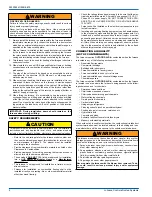
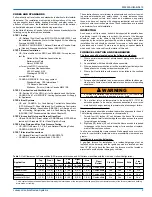

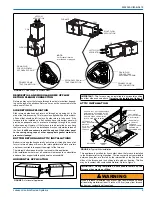
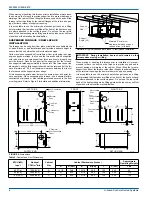

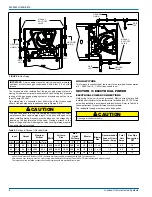

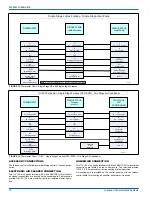
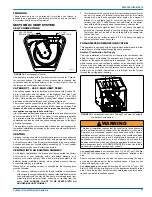
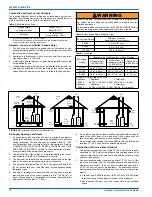


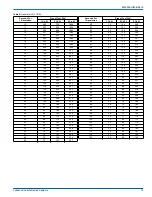

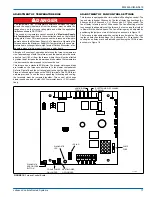

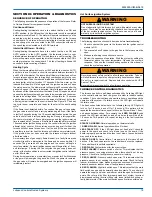
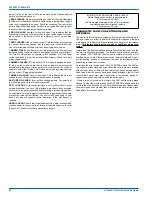
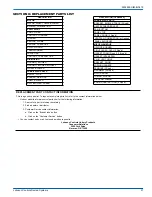

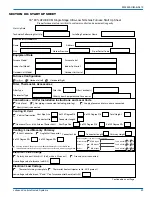
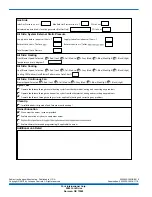













![Roberts Gorden Combat UHD[S] 150-400 Specifications preview](http://thumbs.mh-extra.com/thumbs/roberts-gorden/combat-uhd-s-150-400/combat-uhd-s-150-400_specifications_1469644-1.webp)



